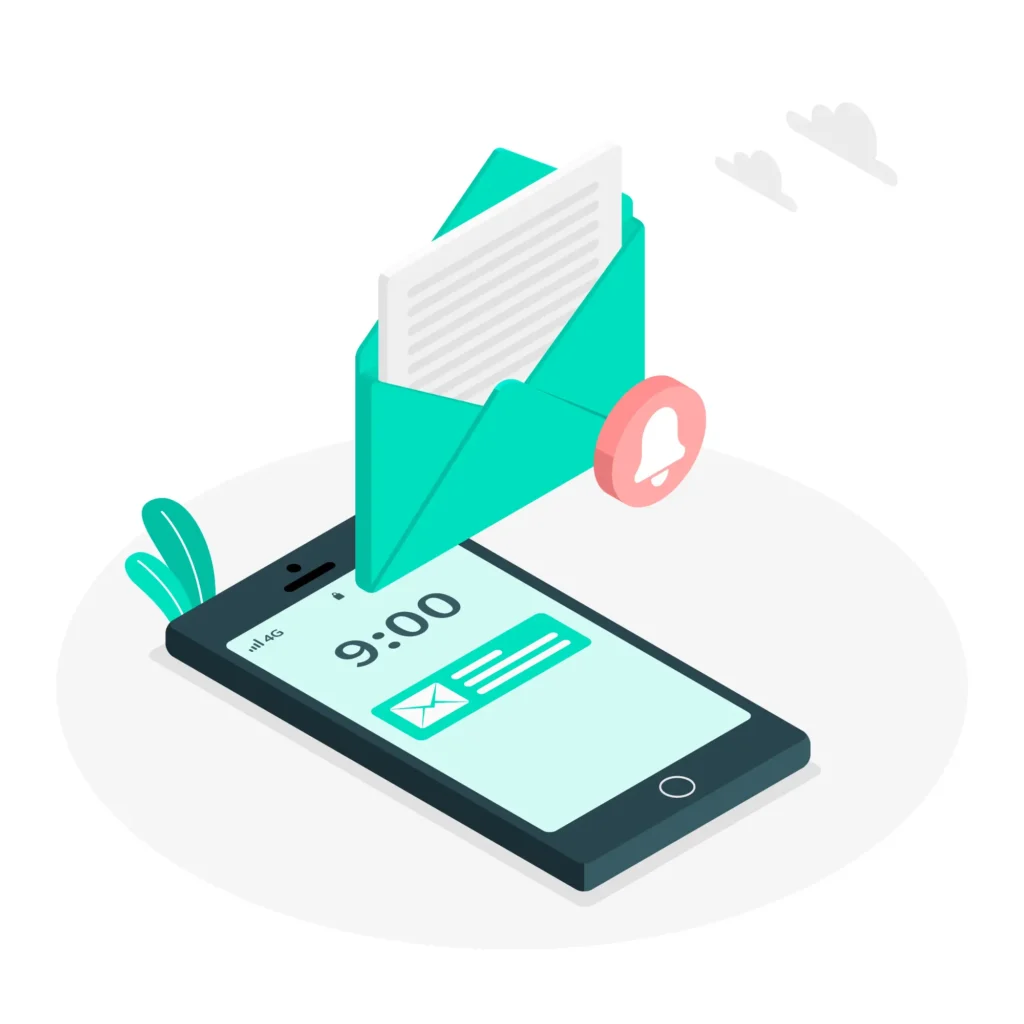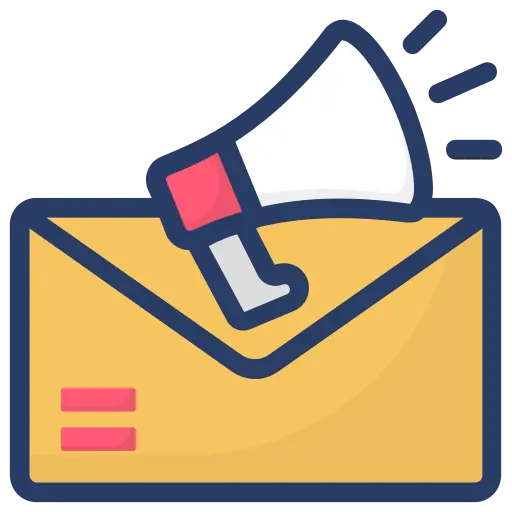10 Tips For Crafting The Perfect Email Subject Line
When a receiver receives a new message in their inbox, the email subject line is generally the first thing they see. As such, it is critical in determining whether or not the email is opened and read. A well-written subject line can pique the reader’s interest and entice them to open the email, but a poorly worded one may be disregarded or even labeled as spam.

Spending time drafting the correct email subject line is vital since it may have a major influence on the success of your email marketing campaign. A compelling subject line can result in increased open rates, more clicks, and, eventually, improved conversion rates. A poor or unattractive subject line, on the other hand, might have the opposite effect.
To enhance the effectiveness of your email marketing activities, it is critical to invest time and work into developing the appropriate email subject line.
The Perfect Email Subject Line Tips
Tip #1: Keep it short and sweet
One of the most crucial guidelines for writing the best email subject line is to keep it brief and to the point. This includes avoiding subject lines that are too long or too wordy, as they might be overwhelming or confusing to the reader.
Long subject lines may be chopped off in the recipient’s inbox, making it harder for them to interpret the message. They may also be less inclined to open the email if the subject matter is difficult to grasp.

Subject lines that are brief and to the point, on the other hand, are more likely to capture the reader’s attention and urge them to open the email. Aim for subject lines of little more than 50 characters, as this is the maximum length that will be displayed on most devices.
Aside from keeping the subject line brief, it is also crucial to ensure that it is sweet, or enticing to the reader. This may be accomplished through the use of actionable language, personalization, and explicit value propositions.
Overall, the subject line’s purpose is to catch the reader’s attention and persuade them to open the email, so make it succinct and appealing.
Tip #2: Use actionable language
Using actionable language in your email subject line can be an effective way to grab the reader’s attention and encourage them to take action. Actionable language refers to words and phrases that encourage the reader to do something, such as “sign up now,” “get your free trial,” or “register for the webinar.”

You may generate a feeling of urgency or significance in your subject line by incorporating actionable language, which drives the reader to open the email and do the requested action. Actionable language can also serve to explain the email’s goal, making it simpler for the reader to grasp what to expect from the communication.
Some examples of actionable language that can be used in email subject lines include:
- “Don’t miss out: [opportunity] ends soon”
- “Last chance to [action]”
- “Get [benefit] with this exclusive offer”
- “Join us for our [event] and learn [topic]”
- “Apply now for [opportunity]”
It is critical to use actionable language sparingly and to avoid too aggressive or salesy language that may turn the reader off. To produce a successful and engaging subject line, combine the use of actionable language with additional tactics like personalization and value propositions.
Tip #3: Personalize the subject line with the recipient’s name
Personalization is a strong strategy for making your email subject line more successful. By incorporating the recipient’s name in the subject line, you may make the email feel more relevant and personalized, increasing the probability that they will open the message.
There are several ways to personalize the subject line with the recipient’s name, such as:

- “Hello [Name], don’t miss out on our [offer]”
- “Looking for [product/service]? [Name], we have what you need”
- “Thank you for your purchase, [Name]”
It is critical to ensure that the recipient’s name is accurately spelled and accepted for inclusion in the subject line. Using the wrong name or a name unfamiliar to the receiver might be off-putting and lessen the subject line’s efficacy.
You may tailor the subject line with other facts, such as the recipient’s location, interests, or previous encounters with your company, in addition to utilizing the recipient’s name. Personalization may be an effective strategy to distinguish your email subject line and enhance interaction.
Tip #4: Use numbers to provide clear value
Including numbers in your email subject line may be an excellent technique to convey clear value while also capturing the reader’s attention. Numbers can serve to define the objective of the email and offer the reader a quick and easy approach to comprehending the benefits of opening the message.
There are several ways to use numbers in your email subject line, such as:

- “Get 10% off your next purchase”
- “Join our webinar and learn the top 5 strategies for [topic]”
- “Our top 3 tips for [topic]”
Including particular, relevant figures in your subject line might assist make the email feel more meaningful and worthwhile to open. Avoid utilizing random or unnecessary numbers, as this might reduce the subject line’s efficacy.
In addition to utilizing figures to demonstrate obvious value, make sure the rest of the subject line is appealing and relevant to the reader. Rather than depending on stats as the major selling point, use them to support an existing great topic line.
Tip #5: Make use of subject line testing tools
Subject line testing tools may be a great resource for generating the perfect email subject line. These tools enable you to test several subject lines to see which ones are most efficient at driving opens and clicks.
There are several topic line testing tools available, such as:
A/B testing tools: These tools allow you to compare two distinct subject lines to discover which works better.”

Multivariate testing tools: allow you to test various factors in your subject lines, such as different words or phrases, to discover which combination performs best.
Predictive analysis tools:: Based on historical data, these tools utilize machine learning algorithms to anticipate which topic lines would do the best.
Subject line testing software may assist you in optimizing your subject line for optimum impact and improving the overall success of your email marketing campaign. To discover the most successful method for your audience, try several subject lines and evaluate the results.
Tip #6: Avoid using spam trigger words
Spam trigger words are terms or phrases that are often used in spam emails and can cause spam filters to alert or your email to be tagged as spam. By omitting these terms in your email subject line, you can improve the chances that your email will be routed to the recipient’s inbox rather than their spam bin.
Avoid using the following spam trigger words:

- Free
- Earn Money
- Buy
- Call now
- Click below
- Double your money
- Get it now
- Limited time
- Order now
- Special Promotion
It’s worth noting that there is no official list of spam trigger phrases because different email clients and spam filters use different criteria to identify spam. It’s always a good idea to check your subject line for anything that might be considered spam and to test your emails before sending them to your full list.
Overall, avoid employing spammy language or practices in your email subject line, since this can reduce the efficacy of your email marketing campaign and damage your reputation.
Tip #7: Incorporate branding in the subject line
Incorporating branding into your email subject line can help to enhance awareness and build trust with the reader. By incorporating your company name or logo in the subject line, you can make it apparent to the reader who is sending the email and help them distinguish it from others in their inbox.
There are various methods to include branding in your topic line, for example:

- Including your company name: “Introducing our new [product/service] from [company name]”
- Use your company’s tagline: “Experience [tagline] with our latest [product/service]”
- Including your company logo: “Save the date: [company name] [event]”
It is critical to employ branding in a discreet manner that does not detract from the overall efficacy of the subject line. Too much branding might be off-putting to the reader and reduce the likelihood of them reading the email.
Incorporating branding into your subject line may be an efficient approach to increase audience awareness and trust, as well as boost the success of your email marketing campaign.
Tip #8: Use emojis sparingly
Including emojis in your email subject line may be a fun and effective method to catch the reader’s attention while also adding individuality to your message. However, emojis should be used sparingly and only when they are acceptable for your business and demographic.
Here are some pointers on how to use emojis in your email subject line:

- Use only a few emojis: One or two emojis can add personality and interest to your subject line, but using too many can be overwhelming and distracting to the reader.
- Choose appropriate emojis: Make sure to choose emojis that are relevant to the content of your email and appropriate for your brand and audience.
- Test the effectiveness of emojis: Use subject line testing tools to determine whether or not emojis are effective in your email campaigns and with your specific audience.
- Consider the device and email client: Some devices and email clients do not support the display of emojis, so it’s important to test the rendering of your subject line on different platforms to ensure it is displayed correctly.
Overall, utilizing emojis in your email subject line may be a fun and successful method to add personality and interest to your communication, but they must be used rarely and correctly for the greatest effects.
Tip #9: Avoid using all caps or excessive punctuation
Using all capitals or excessive punctuation in your email subject line might turn off the reader and reduce the likelihood of them opening the email.

Using all capitals in your subject line might come off as shouty or confrontational, which may turn off the reader and reduce their likelihood of opening the email. Normal capitalization should be used in your subject line, with all capitals reserved for particular emphasis or very brief words.
Excessive punctuation, such as several exclamation points or question marks, can also be off-putting to the reader. It can make the subject line appear unduly salesy or spammy, which may reduce the likelihood of the email being opened. It is critical to utilize punctuation correctly in your subject line and to prevent overusing it.
To generate a professional and effective message, employ proper capitalization and punctuation in your email subject line.
Tip #10: Use a clear and compelling call to action
A call to action (CTA) is a precise command that informs the reader of the next step to take. It has the potential to be a great tool for increasing engagement and conversion in your email marketing campaign.
When creating the ideal email subject line, add a clear and engaging CTA that tells the reader what to anticipate from the email and motivates them to act.
Here are some pointers for including a clear and appealing call to action in your email subject line:

- Make it specific: Be clear and specific about the action you want the reader to take. Avoid vague or general CTAs that may be confusing to the reader.
- Use actionable language: Use words and phrases that encourage the reader to take action, such as “register now,” “download now,” or “sign up for our newsletter.”
- Create a sense of urgency: Encourage the reader to act quickly by using words or phrases that create a sense of urgency, such as “limited time offer” or “act now.”
- Make it relevant: Make sure the CTA is relevant to the content of the email and the needs and interests of the reader.
Overall, incorporating a clear and appealing call to action (CTA) in your email subject line can be an effective strategy to promote engagement and conversion in your email marketing campaign.
Conclusion
The email subject line is an important component of any email marketing campaign since it influences whether or not the email is opened and read. A strong subject line can pique the reader’s interest and entice them to open the email, but a poor or unattractive subject line may be disregarded or even labeled as spam.
Keep it short and sweet, use actionable language, personalize the subject line with the recipient’s name, use numbers to provide clear value, use subject line testing tools, avoid spam trigger words, incorporate branding, use emojis sparingly, avoid all caps or excessive punctuation, and include a clear and compelling message.
Following these guidelines will allow you to create effective and appealing email subject lines that will increase engagement and enhance the overall performance of your email marketing campaign.
Bonus tip
Stay up to date with email subject line best practices
Keeping up with the newest email subject line best practices will help you consistently tweak and increase the efficacy of your email marketing efforts. Here are some pointers for remaining current on email subject line best practices:
- Monitor industry trends: Keep an eye on industry trends and see what techniques and strategies are being used successfully by other businesses in your industry.
- Test and analyze your subject lines: Regularly test and analyze your subject lines to see what works best for your audience and adjust your approach accordingly.
- Follow email marketing experts: Follow email marketing experts and industry publications to stay informed about the latest best practices and techniques.
- Attend industry events: Attend industry events, such as conferences and workshops, to learn from experts and stay up to date with the latest email marketing trends.
You can guarantee that you are employing the most effective tactics to boost engagement and enhance the performance of your email marketing campaigns by staying up to speed with the current email subject line best practices.







